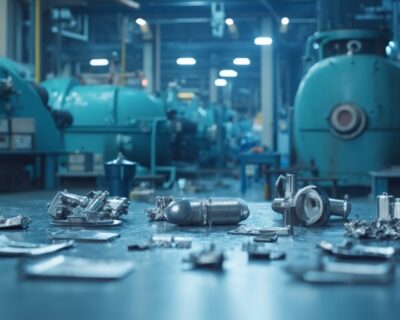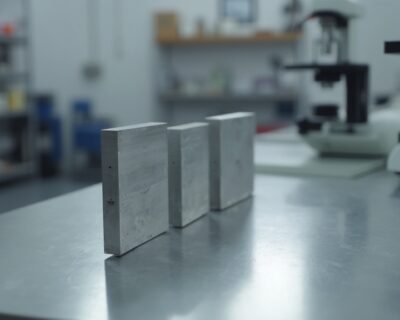Blogs

Exploring the Mechanical Properties and Applications of Ni Alloys
Introduction
In the realm of advanced materials, nickel alloys stand out for their diverse properties and extensive applications across various industries. From aerospace to chemical processing, these alloys are indispensable due to their exceptional mechanical strength, corrosion resistance, and high-temperature stability. This article delves into the different types of nickel alloys, examining their unique properties and the crucial roles they play in modern technology and infrastructure.
It explores the mechanical properties that make these alloys essential in high-stress applications, their widespread industrial uses, and the ongoing surge in demand driven by sectors such as aerospace and energy. Additionally, the article highlights the remarkable corrosion and wear resistance of nickel alloys, underscoring their importance in extending the lifespan and reliability of critical components. As the global demand for these versatile materials continues to rise, understanding their properties and applications becomes ever more critical for procurement managers seeking to navigate the complexities of the market.
Types of Ni Alloys and Their Properties
Nickel mixtures are classified into various groups according to their elemental makeup and microstructural features. Among the most common are austenitic nickel-based materials, copper-nickel mixtures, molybdenum-nickel compositions, and chromium-nickel combinations. Each type boasts unique mechanical properties suited for various applications. For instance, austenitic nickel mixtures typically offer outstanding ductility and toughness, making them ideal for challenging environments. Nickel-copper mixtures, on the other hand, are renowned for their superior corrosion resistance and robust mechanical strength, especially in marine settings. The high demand for these materials in sectors such as aerospace and green energy highlights their essential role in contemporary technology and infrastructure.

Mechanical Properties of Ni Alloys
Nickel mixtures, recognized for their remarkable mechanical characteristics, display differences in tensile strength, yield strength, and elongation depending on their particular compositions and heat treatment methods. These metal mixtures are particularly valued for their high strength at elevated temperatures, making them indispensable in high-stress applications such as aerospace and energy sectors. Amidst increasing interest, particularly from the aerospace sector, the cost of nickel-based materials continues to rise because of their crucial function in producing jet aircraft and other high-performance parts.
In addition, certain metal combinations have remarkable fatigue durability and can withstand thermal cycling without compromising structural stability, further improving their usefulness in challenging settings. For example, the worldwide aerospace sector’s rebound has greatly raised the need for these materials, which are now essential in the building of aircraft because of their excellent corrosion resistance and mechanical characteristics. This surge in need is also impacting the energy infrastructure development, as nickel is diverted from sectors such as offshore and liquefied natural gas (LNG) terminals.
The strong performance of these materials in extreme conditions highlights their essential role in contemporary engineering applications. As demand continues to grow, procurement managers must navigate the complexities of securing these materials amidst fluctuating market dynamics.

Applications of Ni Alloys
‘Nickel mixtures are indispensable across numerous industries, with their applications spanning aerospace, automotive, and chemical processing sectors.’. In aerospace, these materials are essential for parts such as turbine engines and exhaust systems, valued for their high-temperature strength and durability against oxidation. ‘The automotive sector gains advantages from metal mixtures in components that require strength and toughness in severe conditions, such as exhaust systems.’. Chemical processing industries utilize certain alloys for their exceptional resistance to corrosive media, making them ideal for use in valves, pumps, and heat exchangers.
The demand for this metal is projected to surge by around 65 percent by the end of the decade, driven largely by the energy transition. Nickel’s role in energy storage technologies, particularly in the cathodes of lithium-ion batteries for electric vehicles (EVs), is expanding. At present, only four percent of the world’s metal output is utilized in vehicle batteries, but this figure could increase to 40 percent by 2030. This increased usage is not limited to EVs; wind turbines, solar panels, and green hydrogen production also require high-performance metal alloys.
The aerospace sector’s rebound and increasing need for jet aircraft from firms such as Boeing and Airbus are anticipated to drive metal prices higher. This could potentially strain the supply for energy infrastructure projects, which also rely on nickel for various equipment. The global leader in motion and control technologies, Parker, continues to play a vital role in developing precision-engineered solutions that rely on these high-performance materials, contributing to a cleaner, smarter, and safer world.

Corrosion Resistance of Ni Alloys
‘Nickel mixtures are famous for their outstanding ability to withstand corrosion, a trait that is vital for numerous industrial uses.’. This opposition is primarily caused by the creation of a protective oxide layer on the metal’s surface when subjected to corrosive conditions. In particular, nickel-copper and nickel-molybdenum mixtures excel in resisting pitting and crevice corrosion, making them indispensable in marine and chemical industries.
The practical advantages of this corrosion protection are significant. For instance, the robust performance of these alloys in harsh conditions can extend the lifespan of components used in offshore wind farms. The International Energy Agency projects a fifteen-fold increase in global offshore wind capacity by 2040, highlighting the importance of durable materials.
Furthermore, this barrier lowers maintenance expenses significantly. Given the high capital expenditure required for constructing and operating offshore installations, minimizing maintenance through the use of corrosion-resistant materials is economically advantageous. As Dr. Kaiping Yu noted, understanding and exploiting corrosion resistance mechanisms can lead to breakthroughs that enhance material performance and reliability.
Researchers at Pacific Northwest National Laboratory (PNNL) have also developed new techniques to monitor corrosion more accurately. Traditional methods often left gaps in understanding corrosion progression, but advanced techniques like Shear Assisted Processing and Extrusion (Shape™) provide high-resolution insights. This improved comprehension aids in the creation of metal mixtures that can endure even the most challenging settings, guaranteeing both durability and cost-effectiveness.

High-Temperature Applications of Ni Alloys
‘Nickel compositions are renowned for their exceptional thermal stability, maintaining mechanical properties even at temperatures exceeding 1000°F (538°C).’. This makes them indispensable in high-temperature environments such as jet engines, gas turbines, and industrial furnaces. Parts such as turbine blades, combustion chambers, and heat shields gain from the capacity of certain metals to maintain strength and withstand deformation in extreme conditions. The aerospace sector, specifically, has experienced a rise in need for nickel alloys because of their essential role in maintaining the reliability and efficiency of aircraft. As a result, the increasing need from aerospace giants such as Boeing and Airbus has driven up prices, further highlighting the strategic significance of these materials in energy and industrial applications. This trend underscores the need for advanced materials to meet the rigorous demands of modern engineering challenges.

Wear and Galling Resistance of Ni Alloys
Wear and galling durability are pivotal when selecting materials for components exposed to friction and contact pressure. Nickel alloys, particularly those with high nickel content, demonstrate superior wear resistance, making them ideal for applications involving moving parts such as gears and bearings. Their ability to minimize friction and withstand surface damage significantly enhances their performance in demanding environments, thereby extending the machinery’s service life. Morgan Advanced Materials, for instance, focuses on leveraging advanced materials to solve complex problems, underscoring the importance of selecting the right materials for optimal performance.

Conclusion
Nickel alloys play a crucial role across various industries, offering diverse properties and essential applications. The article discusses several types, including austenitic, nickel-copper, nickel-molybdenum, and nickel-chromium alloys, each tailored for specific demands in aerospace, automotive, and chemical processing sectors.
These alloys are valued for their impressive mechanical properties, such as high tensile strength and exceptional fatigue resistance, making them indispensable in high-stress environments. The increasing demand, particularly from aerospace, drives prices upward, emphasizing their importance in manufacturing high-performance components.
Applications extend beyond aerospace, significantly affecting automotive and chemical processing industries where corrosion resistance is vital. With a projected 65 percent surge in nickel demand driven by electric vehicles and renewable energy technologies, procurement managers face the challenge of securing these critical materials amidst market fluctuations.
Nickel alloys are renowned for their corrosion resistance, enhancing component longevity and reducing maintenance costs. Advances in monitoring corrosion and developing high-performance alloys further bolster their reliability.
In high-temperature applications, these alloys maintain mechanical integrity, especially in aerospace components like turbine blades, underscoring their strategic importance in modern engineering challenges.
A comprehensive understanding of nickel alloys’ properties and applications is essential for effective procurement, ensuring industries can adapt and thrive in a rapidly evolving technological landscape.




